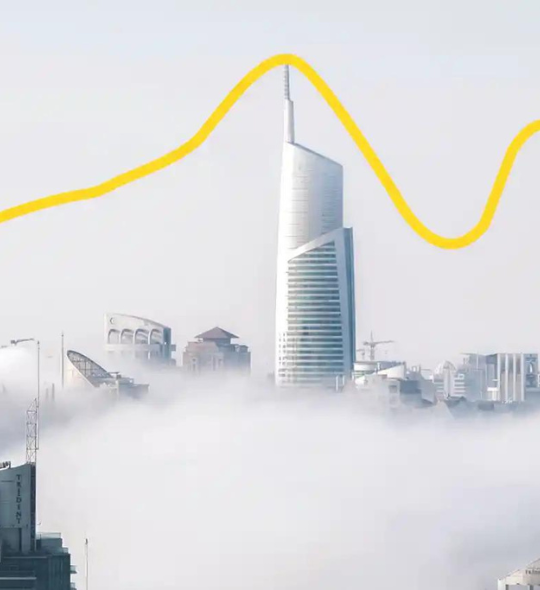
Predicting Peaks can be a real challenge. Here’s what to look out for.
TL;DR
-
Like other commodities, energy markets can be very volatile, which makes predicting Peaks that much harder.
-
False and Double Peaks occur when too many people react the same way to public data, creating a new energy demand profile and invalidating the original warning.
-
Too many companies spam customers with Peak calls out of fear of missing one, but this ultimately costs energy users more money in the long run.
Imagine trying to predict the future and accurately guess what thousands of companies are going to do. Now imagine that there are potentially millions of dollars on the line, which you could lose in as little as an hour.
Sound daunting? Well, this is the situation facing large energy consumers every day who are trying to navigate the electricity market and figure out when Peaks – spikes in energy use – will occur.
Many large electricity customers are not even aware that these factors exist, or if they do, don’t know how to manage them.
Accurately predicting Peaks is one of the hardest things any building manager, CFO, or energy manager has to do. The nature of electricity demand and the many variables that influence both that demand and each other means that it is virtually impossible to predict Peaks with sufficient accuracy to avoid losing a lot of money.
Energy users are typically charged for their usage during five Peak hours during the year, so whether you hit or miss your annual Peak use is down to correctly predicting what will happen in a few hours each year. Companies that successfully thread the needle can reduce their annual electricity bills by up to 70%.
Like other commodity markets, electricity markets are very volatile. For example, electricity demand in Ontario can increase or decrease by as much as 30% from day to day. Despite these large fluctuations, it is still difficult to predict Peaks because of several reasons.
First off, many large energy users are part of demand response (DR) programs which encourage them to alter their usage patterns to help counteract Peaks by referencing Peak prediction data from system operators: users can then consult this data and reduce their usage accordingly.
“Like other commodity markets, electricity markets are very volatile. For example, electricity demand in Ontario can increase or decrease by as much as 30% from day to day.”
This works fine when the DR program has a small number of participants, but the more users that join the program, the more unreliable the prediction data becomes. This is due to something called chaos theory (the more variables the harder it is to predict outcomes) because if thousands of users are all basing their decisions on the same publicly available data, it can negate that data’s predictive power.
For instance, if the public data says that a Peak will occur between 5 pm-6 pm next Monday, and everyone then reduces at the same time, then the Peak never materializes, and everyone has just lost money shutting down for no reason.
This makes trying to get ahead of the market extremely difficult since everyone (including you) is basing their decisions on the same data. By using the public data you yourself become another variable in the equation, which then changes the result.
False Peaks and Double Peaks
This in turn leads to new problems like false Peaks and double Peaks. False Peaks happen when the public data says a Peak will happen (e.g. 5 pm – 6 pm on Monday), so everyone reacts by reducing energy use, which cancels out the original prediction.
If the system is already stressed by other factors, like an extended cold snap, it can lead system operators to repeatedly warn of Peaks.
For example, during the prolonged cold snap in Ontario between December 2017 and January 2018, the provincial system operator – IESO – predicted 9 Peaks within 12 days – but only two actually happened because users kept reducing their energy use.
So not only do the Peaks not occur, but businesses lose money because they are constantly reducing production or shutting down completely to avoid the Peaks.
Then there are also double Peaks that you have to deal with, which are Peaks that occur before and after a predicted Peak. Let’s use the same time frame as before (5 pm-6 pm) to unpack the effects of double Peaks. If everyone is told that a Peak will happen between 5 pm and 6 pm, then the usage for the hour will decrease substantially, making it a false Peak; however, the hours directly before and after the false Peak now become the real Peaks.
The risk of this happening is heightened during extreme weather when large energy users are most likely to curtail usage. The alternative, shutting down for 4-6 hours, might avoid the double Peak, but is massively disruptive and costly.
As soon as this warning was issued, it set into motion a whole new scenario, a scenario where the original warning no longer applies.
Let’s use an analogy to explain this phenomenon. Imagine that your community is expecting to experience disruptive road works in a few days which will create serious traffic jams. In this analogy, the road under construction represents a Peak hourly window, with different streets / routes representing different hourly windows.
The cars on the road represent the demand in the grid: more cars means more demand and more infrastructure strain.
If the traffic authority wants to prevent people from driving down the road under construction, and wants to avoid horrible traffic backup, it will naturally decide to issue a warning and suggest alternate routes for motorists. This strategy makes sense in theory, but problems arise when it is put into practice.
If too many people take heed of the detour suggestions, then those detour routes will be the actual sites of traffic congestion, not the road under construction.
While the initial congestion forecast (i.e. avoid construction zone) was valid, as soon as this warning was issued, it set into motion a whole new scenario, a scenario where the original warning no longer applies.
It makes things even more annoying for those motorists stuck in detour traffic is the fact that they could have actually avoided the crush by opting to drive down the road under construction, so long as not too many people did the same thing. This is the hard part, trying to predict what everyone else is going to do during a Peak.
Damned if you do, damned if you don’t
Ironically, the higher the predicted Peak, the less likely it is to occur, due to what is known as market response. You might ask why businesses always react to these Peak calls when everyone knows that they are unreliable? Well, if you don’t react to a Peak and it turns out to be real then you can lose even more money than you would have from shutting down.
To help explain this, imagine that company ABC Inc. normally uses 1% of the energy in a system, which means it pays 1% of the system’s Global Adjustment fees – which pay for things like system upgrades and capacity – each year. Since that fee is based on usage levels during the five Peak hours, ABC Inc. decides to reduce its energy use to 0.5% of the system’s total, which means it only pays 0.5% of the total fees as well. So far so good.
The problem is that if only 5 of say 40 Peak calls are real matter then the company could lose a lot of money from shutting down 35 times per year when they didn’t have to.
On the other hand, if the company decides not to respond to a Peak call and they get it wrong, but other companies get it right, that means that during the Peak hour ABC Inc.’s energy use stays the same, but overall energy use declines. That means that ABC Inc.’s relative share of total energy use has actually increased, say to 1.5% of the total. That means they have to pay 1.5% of all global adjustment fees for that year – a massive financial penalty.
Predicting and responding to Peaks is truly a case of ‘damned if you do, damned if you don’t, a state of affairs made only worse by the fact that most of the energy consultants that companies employ to help them are not actually able to cope with the how complex Peaks are either.
Predicting and responding to Peaks is truly a case of ‘damned if you do, damned if you don’t, a state of affairs made only worse by the fact that most of the energy consultants that companies employ to help them are not actually able to cope with the how complex Peaks are either.
Many consultants use something called a linear regression approach using publicly available data to basically ‘connect the dots’ and try to predict where future data points will be. This approach works for simple systems, but they don’t take into consideration the fact that the variables (usage, weather, temperature, etc.) they are measuring are not only impacting what you are trying to measure (energy demand), but are also impacting each other.
These interactions among variables drastically increase the difficulty in predicting Peaks using linear regression. In order to properly tackle Peaks, EnPowered uses machine learning algorithms called neural networks, which are excellent at analyzing the relationship between each variable and all other variables.
During the 2019 / 2020 summer Peak period, the IESO called 20 Peak events, while EnPowered only made 8 calls, while still hitting all 5 Peaks. That means our customers could keep operating as usual during those 12 fake Peaks, saving money both by not shutting down and by hitting all 5 true Peaks.
EnPowered manages to provide this unparalleled level of accuracy thanks to our machine learning algorithms, which process 400 million pieces of data (everything from temperature to human behavior to wind speed to real-time usage) which are updated every five minutes, 24/7/365. We’d be more than happy to help you navigate the confusing world of Peaks and Peak pricing.




